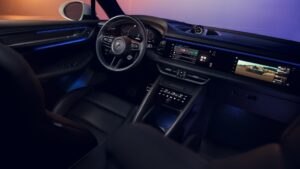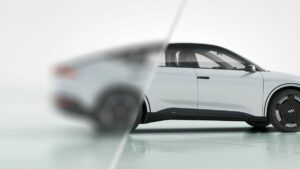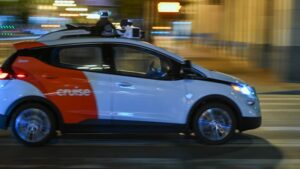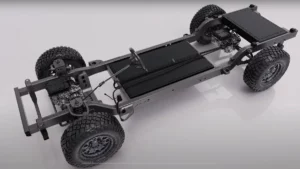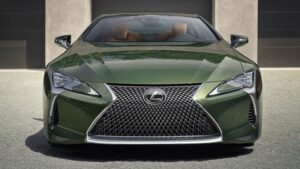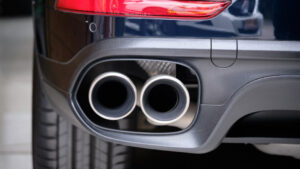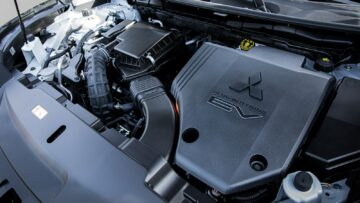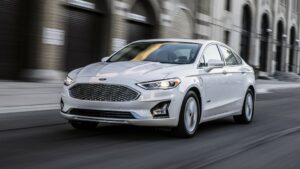Pros: Reasonable price; more passenger and cargo space than EV rivals; surprisingly deft handling; strong safety ratings; made in America
Cons: Still some frustrating interior controls; some cheap interior materials; slower to charge than some rivals
The 2024 Volkswagen ID.4 is a sensible electric SUV that’s roomy, good to drive and reasonably priced. We like the interior design aesthetic, which is clean and interesting, without too much visual clutter, while leaning into the amount of passenger space it provides. Opening the doors reveals a much larger vehicle than you see from the outside, and the spacious rear seating is great for comfortably conveying full-grown adult passengers or kids in bulky car seats.
Our biggest complaint with the ID.4, though, has been about its interior controls — specifically a slow and clumsy infotainment system as well as some frustrating touch-sensitive sliders for things like the HVAC and audio volume. For 2024, VW has fixed some of that, by revising the infotainment with faster software and better menu organization, as well as backlit illumination for some of those sliders … but only in the trims using the larger battery option. The more budget minded ID.4s with the smaller battery still use the same hair-pullingly aggravating tech. Still, we’re more likely to recommend the ID.4 after these updates.
It's also a treat to drive, with smooth, effortless acceleration and adept handling. It’s not as fast as other EVs, but still plenty quick, and the big-battery models get even more power and range for 2024. It comes in rear- and all-wheel drive, so there are some options for those who want to balance range and capability with budget. That said, we’d recommend ponying up for the bigger battery, not just for the increased capacity, but because those are the versions with the quality-of-life updates we’ve been asking for since the ID.4 launched for the 2021 model year.
Interior & Technology | Passenger & Cargo Space | Performance & Fuel Economy
What it's like to drive | Pricing & Trim Levels | Crash Ratings & Safety Features
What's new for 2024?
For the 2024 model year, some significant changes come to the version with the larger, 82-kilowatt-hour battery. Both rear- and all-wheel-drive variants get more power thanks to a new rear motor shared with the upcoming ID.7 sedan. This bigger-battery version also gets a much-needed update to the infotainment software. There’s now a bigger, 12.9-inch touchscreen (up from the 12-incher that carries over in the 62-kWh model), as well as newly illuminated touch sliders for volume and temperature adjustment.
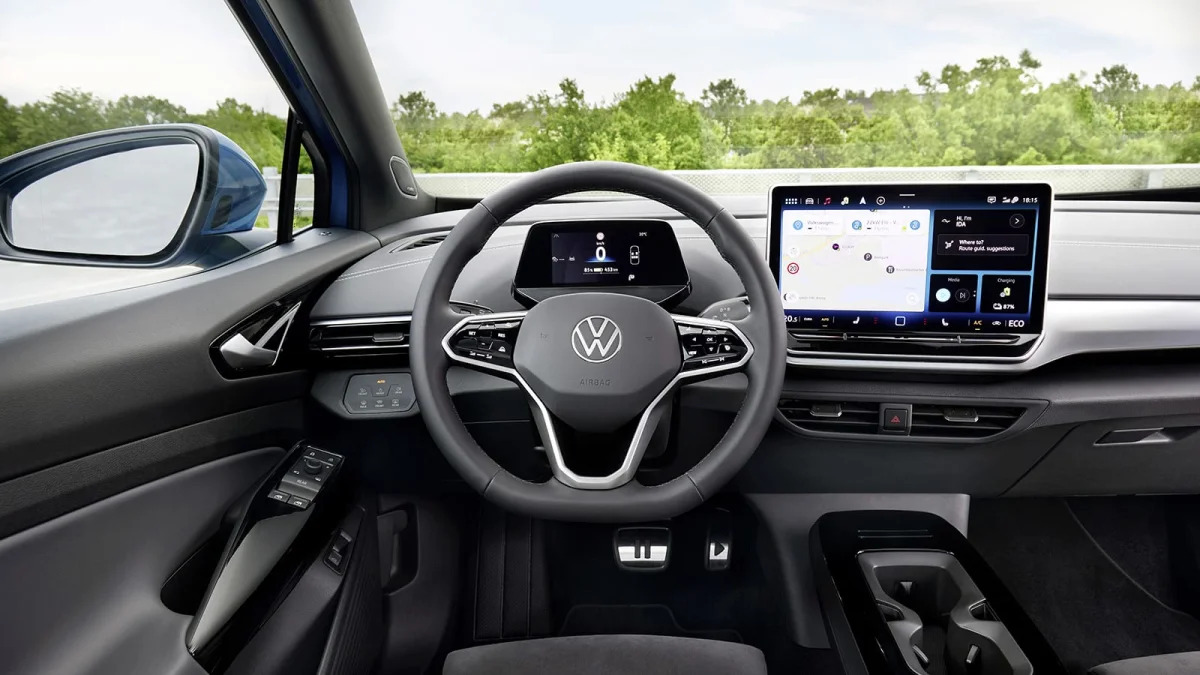
What are the ID.4 interior and in-car technology like?
The ID.4’s cabin feels spacious and airy, especially with the glass roof, while some of the materials, like the nicely colored leatherettes, help maintain that fresh feeling. It's an inviting space that feels sleek, modern and unencumbered. Some underlying plastic pieces are on the cheap side, especially in comparison to rival EVs, but they’re not too distracting. Our biggest gripe is with some of the controls, particularly the lack of physical buttons and knobs. The touch-sensitive climate, volume and menu controls are difficult to use, and there aren’t dedicated buttons for the rear windows up front (you have to tap another control to switch the two available toggles between front and rear windows).
While the 62-kWh models still use the same slow and poorly organized 12-inch touchscreen infotainment system as in 2023, the 82-kWh models see some significant and welcome tech upgrades, starting with a 12.9-inch display with faster response and easier-to-use menus. It's highly customizable, with multiple pages and layouts that can display your preferred applications and information. At the top and bottom are fixed function bars. The lower is a dedicated climate menu that's always accessible, and can have specific shortcuts added to it. The top bar is customizable for shortcuts to your preferred apps and menus. We're pleased to report that the system is finally quick and responsive. We’re also thankful for the illuminated touch slider controls that make an easier time of adjusting the temperature at night, though we would still prefer physical buttons or knobs. Even illuminated touch-sensitive controls require your eyes to be aware from the road for too long.
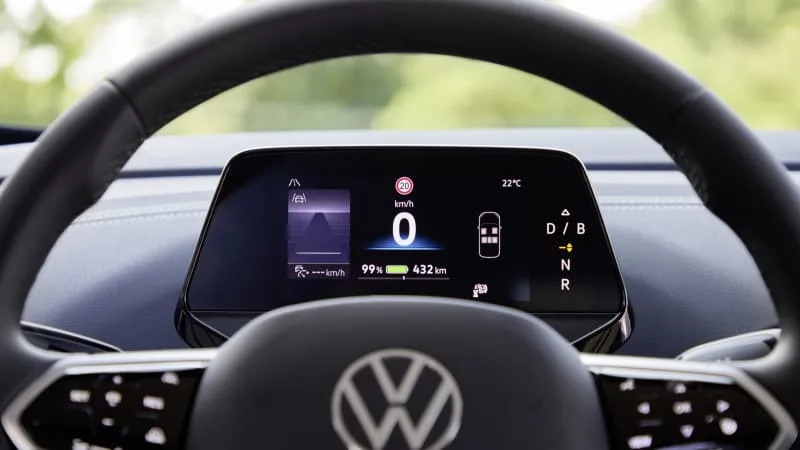
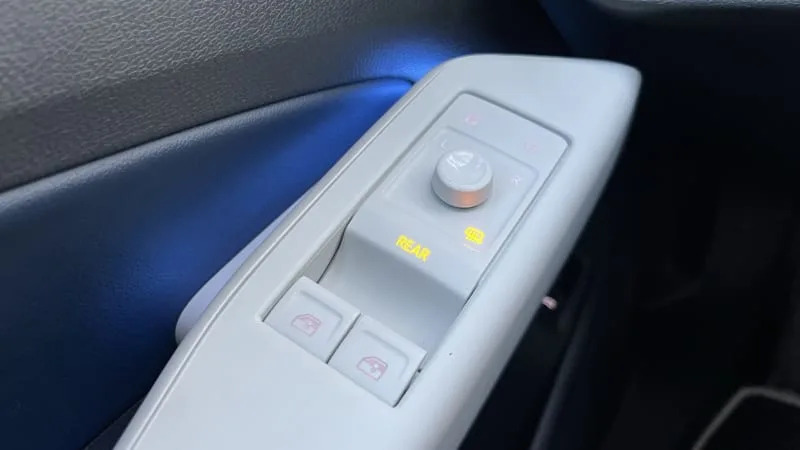
How big is the ID.4?
If you look at the specs, you'll see the VW ID.4 is right in the middle of the compact crossover bunch. However, its electric architecture makes it a Granny Smith in a basket of Galas. Yes, it's not as long as a Honda CR-V or Toyota RAV4, for instance, but its wheelbase is considerably longer. That's best seen in the truly gigantic back seat. We were able to fit an enormous rear-facing Britax Boulevard child seat behind both the passenger and driver seat set for a 6-foot-3 driver. That means you can fit two rear-facing car seats in the back seat, a rarity, while also equating to palatial legroom for big kids and adults. Heck, go ahead and bring along a few basketball players.
Admittedly, the ID.4’s prime electric competitors, the Hyundai Ioniq 5 and Kia EV6, have similarly generous passenger space due to similar architectural reasons. However, the VW is higher off the ground and SUV-like making loading those kids into their car seats a bit easier. VW also holds a decisive advantage in terms of cargo capacity. It has 30.2 cubic-feet of space behind its back seat, which lands it in the middle of the compact SUV pack while blowing away the EV pack. In our ID.4 cargo area luggage test, the ID.4 falls short of mega-carriers like the RAV4 and Hyundai Tucson hybrids, but easily swallowed more stuff than the EV6, Ioniq 5 and Mustang Mach-E.


What are the ID.4 fuel economy, performance and electric range specs?
The ID.4 is available with a choice of batteries and either rear- or all-wheel drive, which alter how much performance and range you get. The base ID.4 Standard comes with a 62-kWh battery and a single motor providing rear-wheel drive and 201 horsepower. VW nor the EPA have announced range for the 2024 models yet, but the 2023 ID.4 Standard was rated at 209 miles on a full charge.
Moving up to the 82-kWh hour battery nets you a more powerful rear motor providing 282 horsepower. Opting for all-wheel drive adds a front motor and a total system output of about 330 horsepower. Again, we don’t know what the range figures are as of this writing, but VW says it expects improvements over last year’s figures, which were rated at 275 miles (RWD) and 255 miles (AWD).
As far as charging, the ID.4 doesn’t do it as quickly as some of its rivals (like Tesla, or the Hyundai/Kia E-GMP vehicles), but it’s not the slowest of the lot, either. The 62-kWh battery can charge at 140 kW, while the 82-kWh versions can do up to 170 kW. In the latter, VW states it can charge from 10-80% in about a half hour. The ID.4 does enjoy the streamlined experience of Plug & Charge at Electrify America stations. As for charging at home or on a public Level 2 charger, the ID.4’s 11-kW onboard charger means the 62-kW pack can fully charge in 6 hours, 15 minutes, while the bigger pack takes 7.5 hours.

What's the ID.4 like to drive?
We haven’t had the chance to extensively drive the 2024 ID.4 yet, so we’re not sure how big of a difference the extra power in the 82-kWh models will make in practice. In the 2023 model, we were impressed by the immediate, smooth and utterly quiet power delivery. It wasn’t neck-snapping, but it still felt quicker than most of its internal-combustion competition. We’re curious to see if the models with extra power can help close the performance gap with some of the more powerful EVs already on the road.
As for its ride and handling, which should carry over from 2023, the ID.4 quite clearly sprouted from the European branch of the Volkswagen family tree that spawned the Golf rather than the American one featuring the Tiguan and Taos. The ride is firmer and more controlled, and the steering more immediate and connected in its responses (though still awfully numb). When combined with its ultra-low center of gravity and rear-wheel-drive architecture, it all amounts to a surprisingly fun crossover to drive. We actually enjoyed flinging it around a mountain more than the Mustang Mach-E, a result that was just as surprising to us.
That said, the ride does let you feel more impacts from poor pavement, so some may lament the ID.4's European feel. There's also quite a lot of road noise, and despite the brake pedal having a natural feel to it, we wish we didn't have to use it so much. The ID.4 doesn't provide a heavy regenerative braking mode that allows for so-called one-pedal driving. It does have "B" mode that results in braking when you lift off the throttle, but the amount is comparable to the "low" modes of other EVs.
What other Volkswagen ID.4 reviews can I read?
2021 Mustang Mach-E vs 2021 Volkswagen ID.4 Comparison Test
We put the two long-range, rear-wheel-drive EVs head to head.
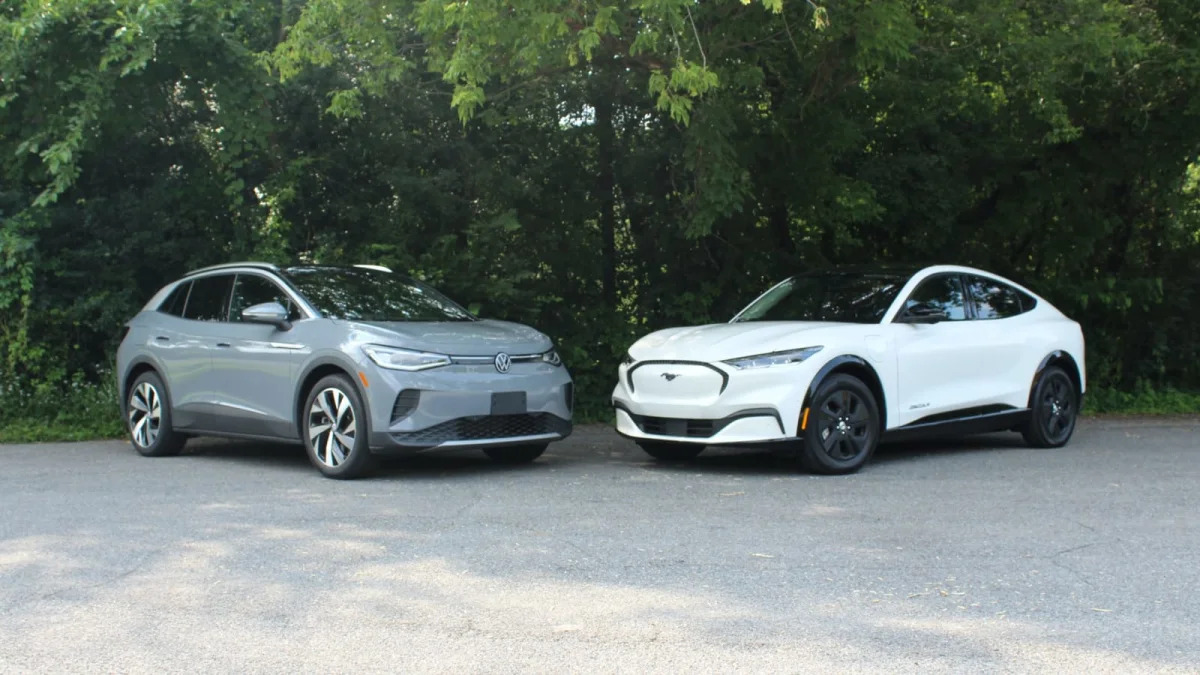
Volkswagen ID.4 Luggage Test | How much cargo space?
Sure, it's an EV, but it's also an SUV. How does it do with SUV stuff?
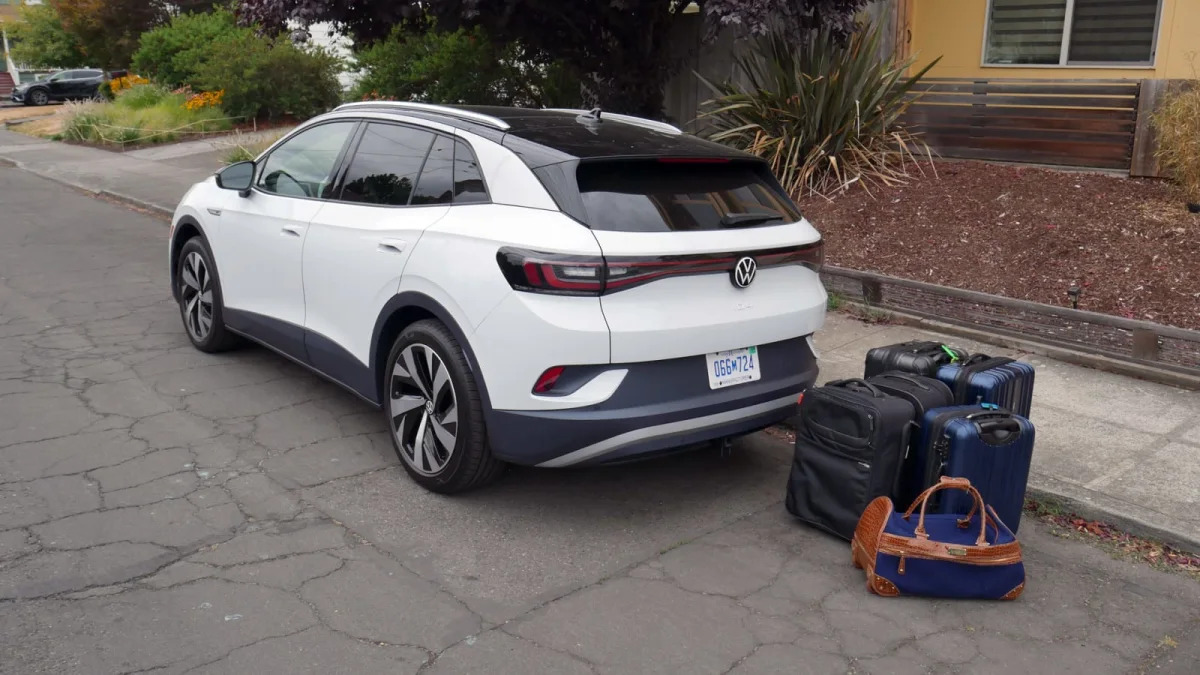
2023 Volkswagen ID.4 Interior Review: The good and the frustrating
We check out the interior of the 2023 ID.4, appreciate its clutter-free environment, and note our frustrations with some of the controls (some of which see improvements for 2024, mind you).
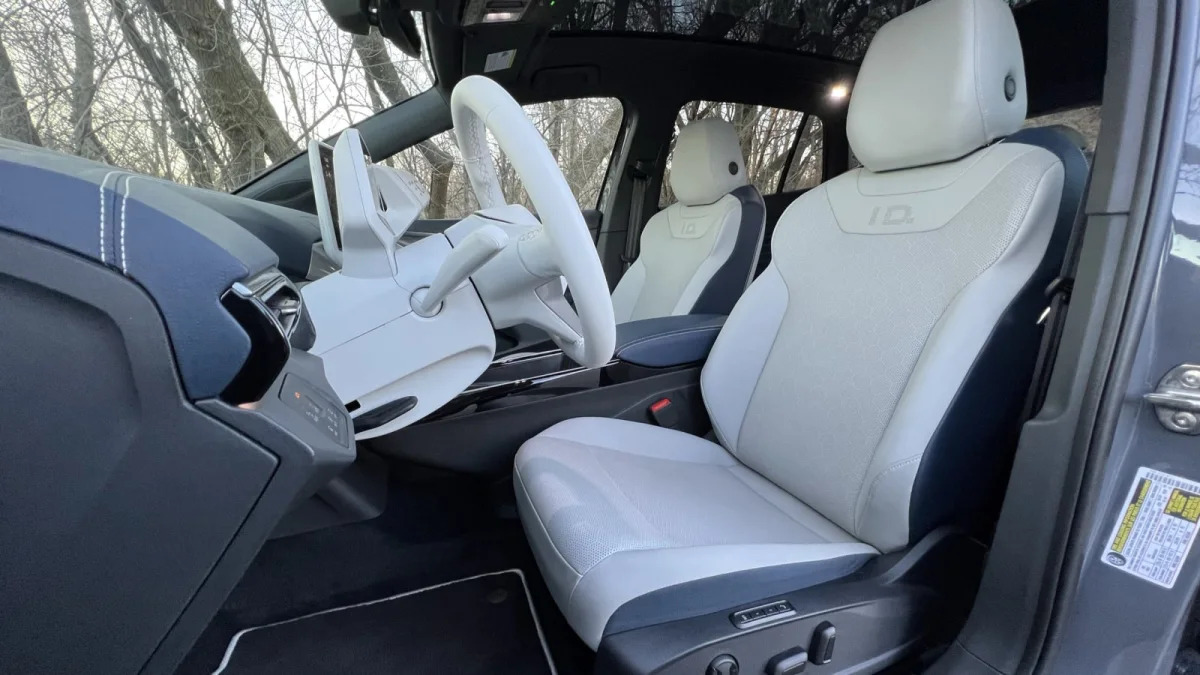
2023 Volkswagen ID.4 First Drive Review: One for the home team
This is our first test of the ID.4 once VW brought production to the USA and made some changes to it.

2021 Volkswagen ID.4 First Drive Review | A new electric personality for VW
Mainstream approach seems right, but will it get lost in the shuffle?
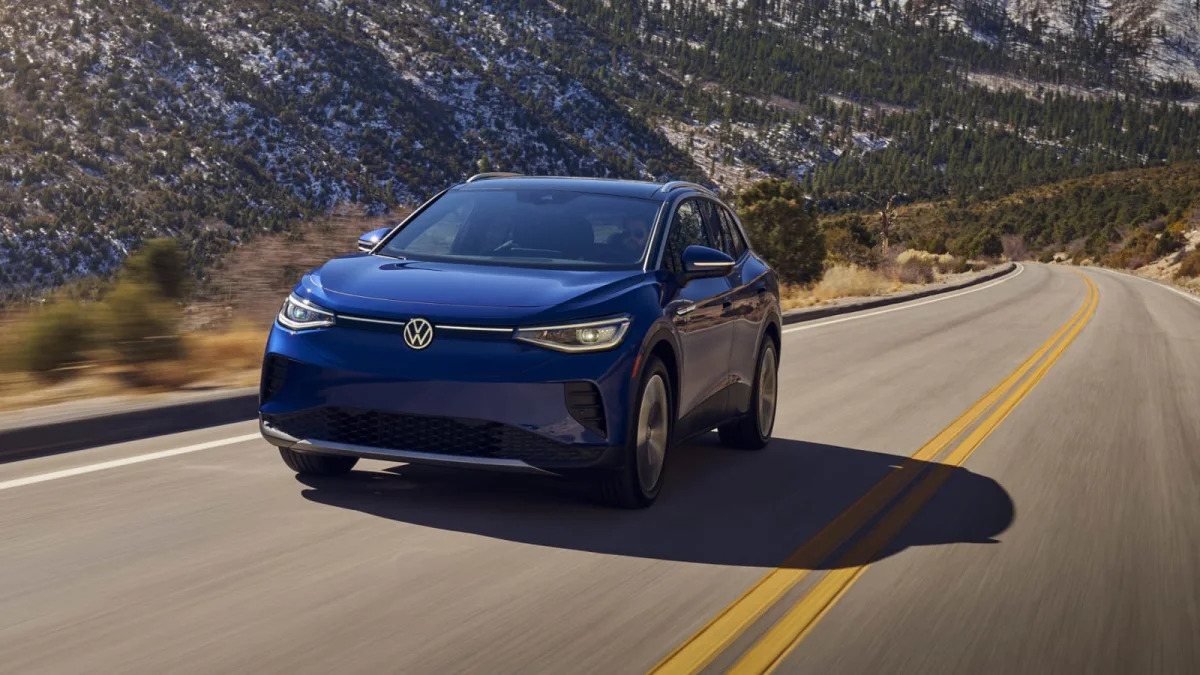
What is the 2024 ID.4’s price?
Volkswagen hasn’t released pricing for the 2024 ID.4 yet, but says it will announce it closer to production in early 2024. The ID.4 will continue to be built at VW’s Chattanooga, Tennessee plant, meaning it should be eligible for the $7,500 federal tax credit.
Prices for the 2023 model are as follows, including the $1,295 destination charge, but excluding the federal tax credit:
- Standard: $38,790
- Pro: $43,790
- S: $43,790
- Pro S: $48,790
- AWD Pro S: $52,590
- Pro S Plus: $51,490
- AWD Pro S Plus: $55,290
What are the ID.4 safety ratings and driver assistance features?
The ID.4 has a full complement of standard active-safety features. Those include forward-collision warning with pedestrian and cyclist detection, automatic emergency braking, adaptive cruise control with stop-and-go capability, lane-keeping assist, blind-spot and rear cross-traffic warning, road-sign recognition and parking sensors.
Third party safety ratings haven’t been updated for the 2024 model year yet, but we don’t expect them to change from 2023. NHTSA gave the 2023 ID.4 a perfect five stars for overall, frontal and side crash protection, and a four-star rollover rating. The Insurance Institute for Highway Safety named it a 2023 Top Safety Pick+ for its best possible crash ratings and sufficiently high ratings for its headlights and automatic emergency braking system.
Related video:
.embed-container { position: relative; padding-bottom: 56.25%; height: 0; overflow: hidden; max-width: 100%; } .embed-container iframe, .embed-container object, .embed-container embed { position: absolute; top: 0; left: 0; width: 100%; height: 100%; }
- SEO Powered Content & PR Distribution. Get Amplified Today.
- PlatoData.Network Vertical Generative Ai. Empower Yourself. Access Here.
- PlatoAiStream. Web3 Intelligence. Knowledge Amplified. Access Here.
- PlatoESG. Carbon, CleanTech, Energy, Environment, Solar, Waste Management. Access Here.
- PlatoHealth. Biotech and Clinical Trials Intelligence. Access Here.
- Source: https://www.autoblog.com/article/2024-volkswagen-id4-review/
- :has
- :is
- :not
- $UP
- 1
- 10
- 12
- 14
- 15%
- 16
- 17
- 19
- 20
- 2021
- 2023
- 2024
- 22
- 23
- 24
- 25
- 27
- 28
- 30
- 31
- 32
- 33
- 35%
- 36
- 39
- 500
- 7
- 8
- 9
- a
- Able
- About
- Absolute
- acceleration
- accessible
- actually
- adaptive
- added
- Adds
- adept
- adjusting
- Adjustment
- Adult
- adults
- ADvantage
- After
- again
- ahead
- All
- allows
- along
- already
- also
- always
- america
- American
- amount
- amounts
- an
- and
- Announce
- announced
- Another
- applications
- appreciate
- approach
- apps
- architectural
- architecture
- ARE
- AREA
- around
- AS
- asking
- assist
- Assistance
- At
- audio
- Automatic
- available
- aware
- away
- b
- back
- Balance
- bar
- bars
- base
- basket
- Basketball
- batteries
- battery
- BE
- because
- been
- behind
- BEST
- Better
- between
- Big
- bigger
- Biggest
- Bit
- Blowing
- both
- Bottom
- Branch
- bring
- brought
- budget
- built
- Bunch
- but
- buttons
- by
- CAN
- capability
- Capacity
- car
- Cargo
- carry
- Center
- Chance
- change
- Changes
- charge
- charging
- cheap
- check
- child
- choice
- clean
- clearly
- Climate
- Close
- closer
- clutter
- combined
- come
- comes
- compact
- comparable
- comparison
- competition
- competitive
- competitors
- complaint
- Complement
- connected
- continue
- control
- controlled
- controls
- Crash
- credit
- cruise
- curious
- customizable
- decisive
- dedicated
- delivery
- Design
- Despite
- destination
- Detection
- didn
- difference
- difficult
- Display
- do
- does
- doesn
- Doesn’t
- Dont
- doors
- drive
- driver
- driving
- due
- Early
- easier
- easily
- economy
- effortless
- either
- Electric
- eligible
- Elm
- embed
- emergency
- enjoy
- enormous
- Environment
- EPA
- especially
- Ether (ETH)
- European
- EV
- Even
- evs
- excluding
- expect
- expects
- experience
- extensively
- extra
- Eyes
- Falls
- family
- far
- FAST
- faster
- Features
- Featuring
- Federal
- feel
- feeling
- feels
- felt
- few
- Figures
- Finally
- First
- fit
- five
- fixed
- follows
- For
- fresh
- from
- front
- frustrating
- Frustrations
- Fuel
- full
- fully
- fun
- function
- gap
- gave
- generous
- get
- glass
- Go
- good
- got
- gravity
- great
- Ground
- had
- Half
- Handling
- Have
- having
- head
- heavy
- height
- help
- Hidden
- High
- higher
- highly
- Highway
- highway safety
- holds
- Home
- hour
- HOURS
- How
- However
- HTTPS
- hvac
- Hyundai
- i
- ID
- if
- immediate
- Impacts
- impressed
- improvements
- in
- include
- Including
- increased
- information
- instance
- Institute
- insurance
- interesting
- interior
- into
- inviting
- IT
- ITS
- jpg
- just
- kids
- Know
- Lack
- lands
- larger
- Last
- launched
- left
- let
- Level
- like
- likely
- ll
- loading
- Long
- longer
- Look
- lost
- Lot
- Low
- lower
- made
- maintain
- make
- MAKES
- Making
- materials
- max-width
- May..
- meaning
- means
- Menu
- Middle
- mind
- minded
- minutes
- Mode
- model
- models
- Modern
- modes
- more
- most
- Motor
- Mountain
- much
- much-needed
- multiple
- Named
- Natural
- Nets
- New
- newly
- night
- Noise
- nor
- note
- now
- object
- of
- off
- on
- Onboard
- once
- ONE
- only
- opening
- Option
- Options
- or
- organization
- Organized
- Other
- our
- out
- output
- outside
- over
- overall
- Pack
- pages
- parking
- particularly
- party
- perfect
- performance
- Personality
- physical
- pieces
- plant
- plastic
- plato
- Plato Data Intelligence
- PlatoData
- players
- pleased
- Plenty
- plug
- plus
- poor
- PoS
- position
- possible
- power
- powerful
- practice
- prefer
- preferred
- price
- pricing
- Prime
- Pro
- Production
- protection
- provide
- provides
- providing
- public
- put
- Quick
- quicker
- quickly
- quite
- range
- rarity
- rated
- rather
- rating
- ratings
- RE
- Read
- reasonable
- reasons
- recognition
- recommend
- regenerative
- relative
- released
- report
- require
- response
- responses
- responsive
- result
- Results
- Reveals
- review
- Reviews
- Ride
- right
- Rival
- rivals
- road
- roof
- s
- Safety
- Said
- same
- says
- SEC
- see
- seems
- seen
- sensors
- set
- shared
- Short
- should
- shuffle
- side
- significant
- similar
- Similarly
- since
- single
- Sleek
- slider
- slow
- smaller
- smith
- smooth
- So
- Software
- some
- Space
- specific
- specifically
- specs
- standard
- Stars
- Starting
- States
- Stations
- steering
- Still
- streamlined
- strong
- sure
- surprising
- Switch
- system
- T
- takes
- Tap
- tax
- tax credit
- tech
- Technology
- tennessee
- terms
- Tesla
- test
- than
- thankful
- thanks
- that
- The
- their
- Them
- There.
- These
- things
- this
- those
- though?
- time
- to
- too
- top
- Total
- touch
- Touchscreen
- treat
- tree
- truly
- two
- underlying
- upcoming
- Update
- updated
- Updates
- upgrades
- us
- USA
- use
- using
- vehicle
- Vehicles
- version
- Video
- visual
- volkswagen
- volume
- vs
- vw
- want
- warning
- was
- we
- webp
- welcome
- WELL
- were
- What
- when
- which
- while
- WHO
- will
- windows
- with
- without
- would
- writing
- Yahoo
- year
- yes
- yet
- you
- Your
- zephyrnet

